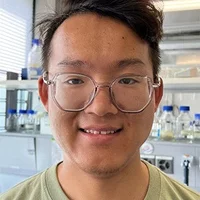Our research aims at understanding the structure and function of amyloid aggregates in neurodegeneration with two objectives:
(1) Optimizing stoichiometry-defined amyloid oligomers towards a new understanding of neurodegeneration
In Alzheimer’s Disease (AD) and Parkinson’s Disease (PD), Aβ and α-synuclein can aggregate into transient oligomers, and eventually deposit as insoluble fibrils. Amyloid oligomers are responsible for neuronal dysfunction through various toxic pathways, which include permeabilizing cellular membranes. These transient oligomers are heterogeneous, which greatly hinders research into their mechanisms and adds serious problems to the development of antibody-based therapies. Recently we showed that uniform, homogeneous, stable oligomers can be engineered by displaying Alzheimer’s Aβ peptides on α-hemolysin (αHL). These complexes have biochemical characteristics that are very similar to disease-related wild-type oligomers. Cryo-EM studies confirmed that the αHL-displayed oligomers have a well-defined stoichiometry, thus providing a stable mimetic antigen for the structure determination and the development of conformation-specific antibodies. The same αHL-fusion approach can also allow engineering antimicrobial peptides and developing a novel biological nanopore. We will further optimize stoichiometry-defined and functionally relevant amyloid oligomers for structural and functional characterization. We will study these artificial amyloid (Alzheimer’s Aβ and Parkinson’s α-syn) oligomers in vitro using structure determination as well as biophysical technologies. In a C. elegans model, we aim at investigating their functional equivalence to the wild type oligomers.
To further confirm the equivalent function, we will raise the conformation-specific antibodies against these optimized Aβ oligomers, and test whether the antibodies can interfere with the membrane permeabilization in vitro and check to what extent the antibodies against αHL-fused oligomers can impact AD in a mouse model. We propose using recent advances achieved at the TOMCAT beamline (Swiss Light Source) in X-ray phase-contrast imaging (X-PCI) to study the impact of the antibodies on the brain’s spatial microstructures. Collaboration with University Hospital Zurich (UHZ) opens the path towards animal and clinically relevant experiments. This highly interdisciplinary project not only allows us to move forward the high-resolution X-ray bio-imaging applications at PSI, but also contributes to the nanoscopic spatial understanding of oligomeric toxicity, and changes in the microstructure and cellular structure associated with neurodegeneration in vivo. Through this project, we hope to contribute molecular mechanisms and novel approaches in developing diagnostics and therapeutics for neurodegenerative diseases like AD.
(2) Characterizing the structure and function of amyloid condensates with the disease-related molecules in neurodegeneration
A growing body of work is revealing the important role of initial amyloid protein condensation in the formation of amyloid fibrils in vitro. It is still unclear how the disease-related molecules initiate or prevent the conversion towards condensation in vivo. The important interacting molecules that we have already studied for Alzheimer’s Aβ fibrillation at PSI are heat shock protein 90 (Hsp90), Alzheimer’s tau protein as well as the metal ions. We characterised the molecular effects of these interacting partners on amyloid formation, including the kinetics of structural conversions from unstructured peptide monomers to aggregates with variable degrees of β-sheet structures, and the toxicity of a variety of intermediate oligomers. We observed that ATP modulates Hsp90's conformational dynamics and reduces its hydrophobic surface to down-regulate its inhibition against Aβ fibrillation. We found that the full-length tau protein solubilizes Aβ40 and prevents its fibrillation. The tau protein delays the Aβ40 fibrillation at sub-stoichiometric ratios, showing different binding affinities toward the different stages of the aggregated Aβ40. This helps to understand the interplay of tau and Aβ in AD. In collaboration with Dr. Dreiser at SLS (the Xtreme beamline), the spectral features of the peptides and AD-related Cu were simultaneously characterized by recording spectra at the N K edge and at the Cu L2,3 edges. The Cu L2,3 edge shows a fingerprint of monovalent Cu(I), coordinated with the peptides. Furthermore, aggregation leads to a smaller signature of Cu(I). This fingerprint of Cu(I) from Copper L2,3 edge spectroscopy can be further explored as a biomarker of cerebrospinal fluid (CSF) for the diagnosis of Alzheimer’s disease.
Our previous achievements over the past 4 years provide the physical and chemical insights into the participation of the disease-related molecules in Aβ fibrillation and toxicity in vitro5. We further plan to investigate this molecular interplay, using X-ray tomographic reconstruction of amyloid condensates and cellular organelles relevant to neurodegeneration in a mouse brain and a living C.elegans. In close collaboration with Prof. Aguzzi at UHZ and Dr. Bonnin at PSI, we aim at expanding this study to also include using light-sheet fluorescence microscopy. We will further characterize the function of amyloid condensates and test whether amyloid condensation can drive the formation of toxic metallic nanoparticles, which we propose contribute to cellular toxicity both in vitro and in C.elegans. The disease-related metal state and local amyloid condensates or amyloid deposits will be characterized by soft X-ray spectroscopy and ptychography of the SIM and Xtreme beamlines in collaboration with Dr. Dreiser and Dr. Kleibert at SLS. The new aspects will shed light on pathological mechanism of neurodegeneration at mesoscales and provide a fundamental basis for targeted intervention of neurodegeneration. These may revolutionize understanding of the root cause of AD and PD.
References
(1) Wu, J., Blum, T. B., Farrell, D. P., DiMaio, F., Abrahams, J. P., and Luo, J*. (2021) Angew. Chemie - Int. Ed. 60, 18680–18687.
(2) Wu, J., Cao, C., Loch, R. A., Tiiman, A., and Luo, J*. (2020) Q. Rev. Biophys. 53, e12.
(3) Wang, H., Lallemang, M., Hermann, B., Wallin, C., Loch, R., Blanc, A., Balzer, B. N., Hugel, T., and Luo, J*. (2021) J. Mol. Biol. 433, 166717.
(4) Wallin, C., Hiruma, Y., Wärmländer, S. K. T. S., Huvent, I., Jarvet, J., Abrahams, J. P., Gräslund, A., Lippens, G., and Luo, J*. (2018) J. Am. Chem. Soc. 140, 8138–8146.
(5) Luo, J.*, Wang, H., Wu, J., Romankov, V., Daffé, N., and Dreiser, J*. (2021) iScience 24, 103465.






